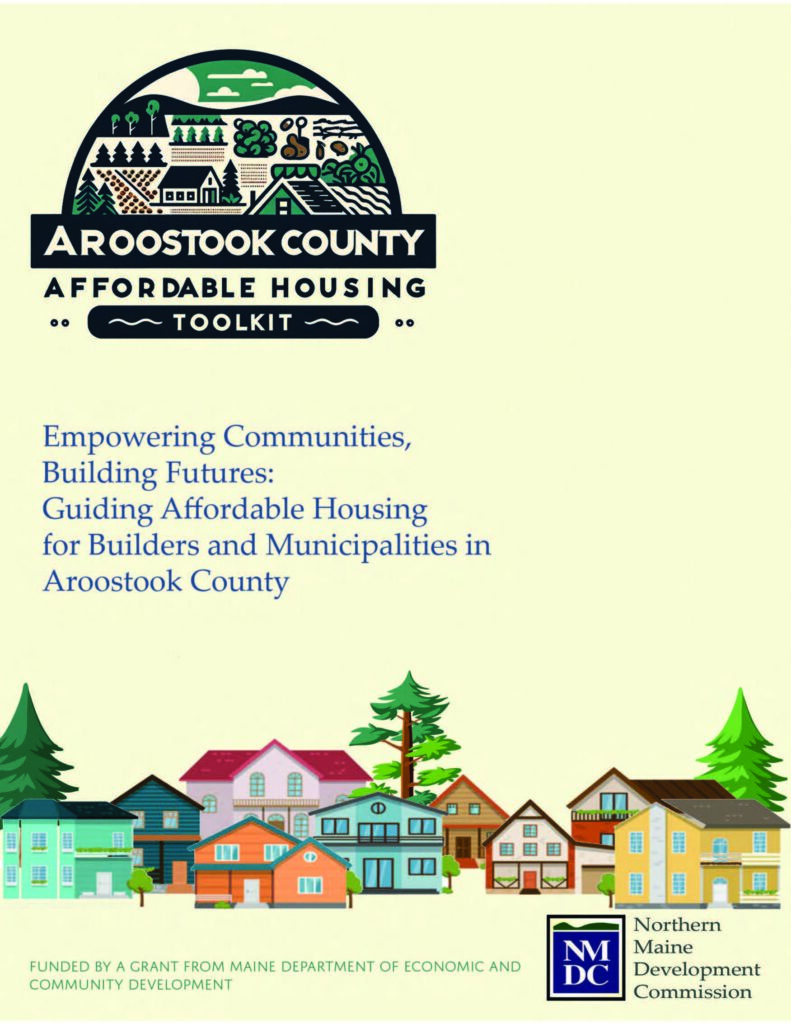Aroostook County Affordable Housing Toolkit
The toolkit includes:
LD2003 Model Wording for Communities
Comprehensive Planning Guide
Guidance on: Land Use, Zoning, Minimum Dwelling Size, Density & Height Bonuses, Missing Middle Housing, Building Forms & Uses, and Pre-Approved Plans
Case Studies
Funding Resources
Land Banks
View the toolkit here:
https://joom.ag/B1Zd
Download LD2003 Model Wording
Additional Resources
RFP Development for Affordable Housing Projects. Editable for your community’s needs.
Guidelines for Preparing the Request For Proposals (RFP)
Housing Toolkit
Data Sets
State of Maine Housing Survey
State of Maine Housing Data Portal
Maine Planning Assistance Program-Comprehensive Plans
Headwaters Economics
United States Census Bureau Data
On The Map
MPAP Comprehensive Plan Data
Maine Comprehensive Plan Data Portal and Mapping Services
Maine Municipal, Regional and Statewide Plans

Census Data Disclaimer:
The ACS 5-year estimates data for rural communities is based on a very small sample, and therefore is subject to often-substantial sampling variability. The degree of uncertainty for an estimate arising from sampling variability is represented through the use of a margin of error, whenever possible.
Northern Maine Development Commission recognize that existing Census data is often inaccurate. Whenever possible, local planning study data should be used in place of Census data. However, in most cases, the most recent data available is the current ACS 5-year estimate. Therefore, this data is quoted as current and utilized to make assumptions about local trends, but the understanding exists that a generous margin of error should be allowed for in the ACS 5-year estimate data.